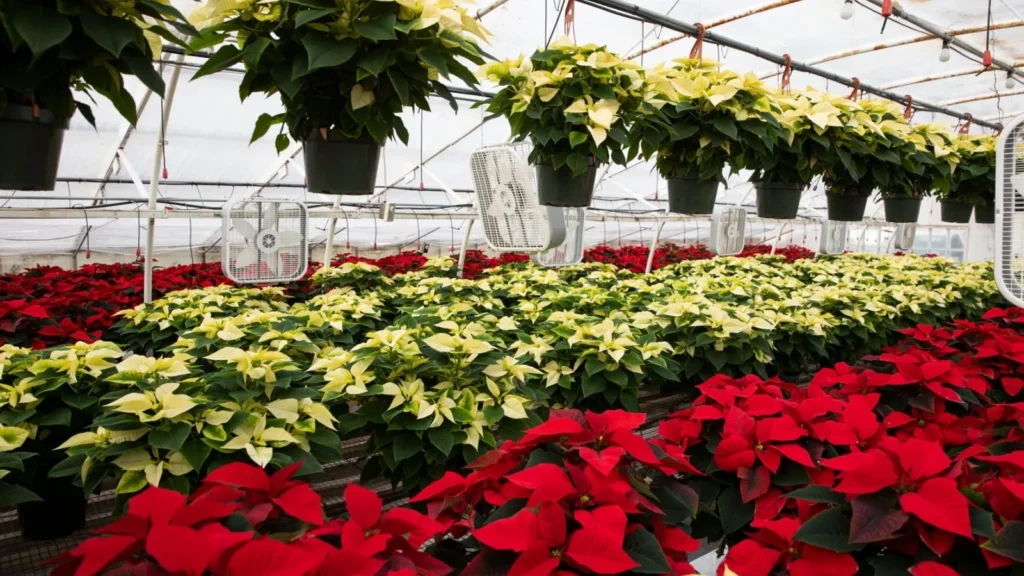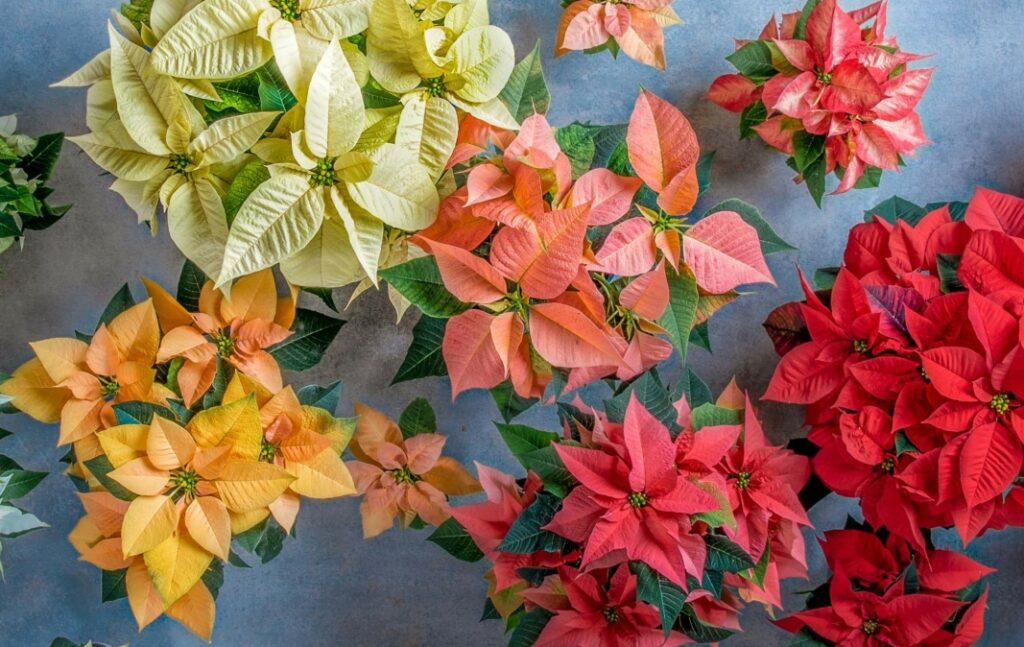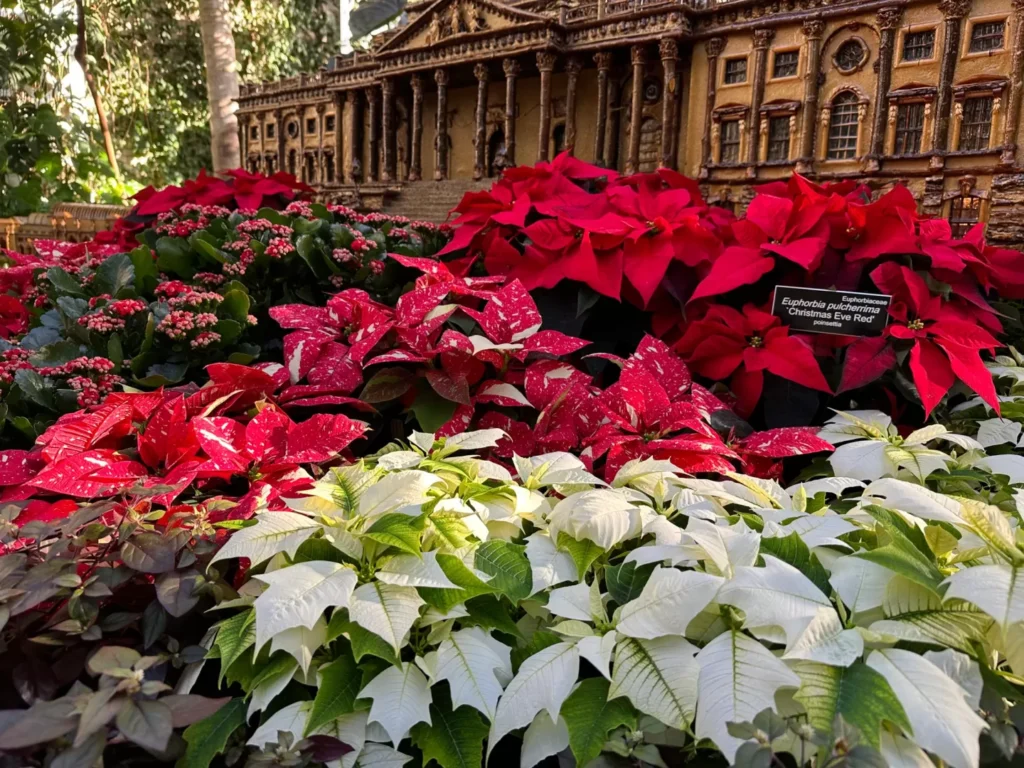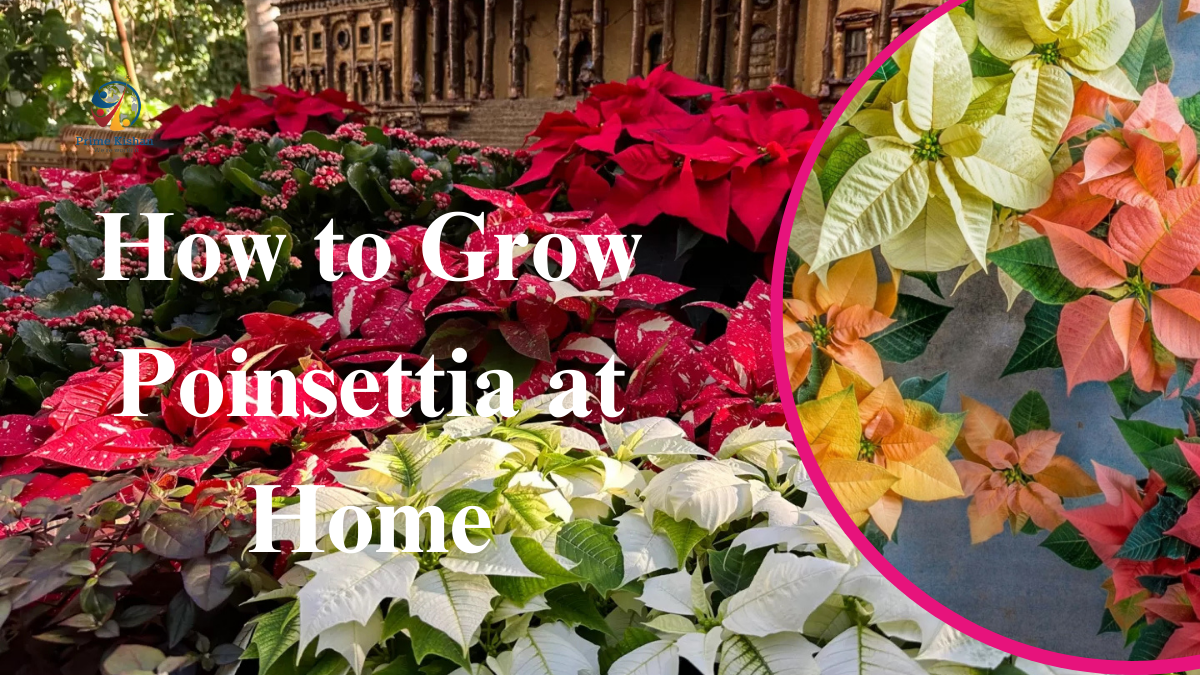How to grow Poinsettia at Home – Poinsettias (Euphorbia pulcherrima) are vibrant, festive plants that add a splash of color to homes, especially during the holiday season. Known for their striking red and green foliage, they are often associated with Christmas decorations. However, with proper care, poinsettias can thrive year-round.
Table of Contents
Choosing the Right Poinsettia Plant
When purchasing a poinsettia plant, look for one with dark green leaves, bright and intact bracts (the colored leaves), and no signs of wilting or yellowing. Ensure the plant has a well-developed root system and is free from pests or diseases.

Ideal Growing Conditions
1. Light Requirements – Poinsettias thrive in bright, indirect sunlight. Place the plant near a window where it receives at least 6 hours of natural light daily. However, avoid direct sunlight, as it can scorch the leaves.
2. Temperature and Humidity – Poinsettias prefer temperatures between 65-75°F (18-24°C) during the day and around 60°F (15°C) at night. Keep them away from cold drafts, heaters, and air conditioning vents, as sudden temperature changes can cause leaf drop. Moderate humidity levels help the plant stay healthy, so consider using a humidity tray or misting occasionally.
3. Watering – Water the poinsettia when the top inch of soil feels dry. Overwatering can lead to root rot, while underwatering causes the plant to wilt. Use a well-draining pot with drainage holes, and remove excess water from the saucer after watering.
4. Soil and Potting– Poinsettias grow best in well-draining, slightly acidic soil with a pH of 6.0-6.5. A mix of peat moss, perlite, and sand works well. Repot the plant in a slightly larger container if it outgrows its current pot.
Fertilizing and Pruning

Fertilizing – Feed your poinsettia with a balanced, water-soluble fertilizer (10-10-10 or 20-20-20) once a month during the growing season (spring and summer). Reduce feeding in fall and winter when the plant goes dormant.
Pruning – After the holiday season, prune the plant to encourage bushier growth. Cut back the stems to about 6 inches above the soil. This helps the plant develop new growth in the spring.
Reblooming – To get your poinsettia to bloom again, follow these steps
- In Spring: Reduce watering and allow the plant to enter dormancy. Resume regular watering and feeding when new growth appears.
- In Summer: Keep the plant outdoors in a shaded area and prune it lightly to maintain its shape.
- In Fall: Starting in late September or early October, expose the plant to complete darkness for 14 hours each night and bright light during the day. This light-dark cycle should continue for about 8 weeks to trigger blooming.
- In Winter: Once the bracts develop their color, return the plant to a bright location to enjoy the vibrant display.
Common Problems and Solutions

1. Yellowing Leaves
- Cause: Overwatering, poor drainage, or lack of nutrients.
- Solution: Ensure proper watering, improve soil drainage, and fertilize as needed.
2. Leaf Drop
- Cause: Sudden temperature changes, exposure to drafts, or insufficient light.
- Solution: Maintain stable temperatures, keep the plant away from vents, and provide adequate light.
3. Pests (Aphids, Whiteflies, Spider Mites)
- Solution: Wash leaves with mild soapy water, use neem oil, or introduce natural predators like ladybugs.
Growing poinsettias at home is rewarding and can be done with proper care and attention. By providing the right light, temperature, watering schedule, and occasional pruning, you can keep your poinsettia healthy and vibrant throughout the year.


